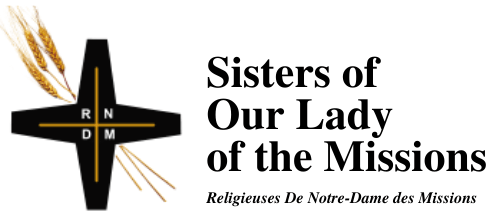Genesis 18: 1-10a; Psalm 15; Colossians 1: 24-28 (RM) or 15-28 (RCL); Luke 10: 38-42.
Either/or, A/not A, right/wrong binary splits are easy. Too easy. They might provide a way to get a grasp on data or ideas, but in the end, they betray our trust. They lie to us. They pretend to be value-free, but in fact one side is always, at least implicitly, better than the other. Black/white. Good/bad. Good girl/bad girl.
Too often this is what preachers have done with the Martha & Mary story. We’re quite familiar with the way that the story has been interpreted to create or reinforce a sharp split between persons, or the roles they play, or ideas, or stereotypes. Contemplative vs active life. Learning vs servile work. Listening vs doing. Busyness vs serenity. Justification by faith vs justification by works. Ultimately, here, sister against sister.
Luke has been given a good deal of credit for balancing stories about male protagonists with a parallel story of a female figure. Luke’s Gospel looks female-friendly, at least on the surface. But there’s a lot of negative and unhelpful potential in this story. We’ll name a few of the issues, then try to find some positive ground on which we can build something healthier and more just.
The sisters are at odds – one is frustrated with the other. But they do not speak to each other to find a solution. Martha goes over Mary’s head to ask the guest to intervene and compel Mary to do what Martha wants. Jesus does not turn it back to the two of them to deal with their own problem. He makes a pronouncement that favours one and chides the other as if she were a simpleton. The language sets up his preeminent position and prerogative to judge: he is called not by name but by title, ho kyrios, the Lord, and Martha addresses him as such. The model is kyriarchal, built on the lord’s assumed right to power over others.
Martha is silenced. Mary wins. Meanwhile, unlike the twelve-year-old Jesus in the Temple, posing questions and dialoguing with the rabbis, Mary just sits there passively. Jesus teaches her but does not give her a commission to go teach others.
Let’s unfold a layer and identify what’s more positively gender-bending in this story. Mary is in fact taking the physical posture of a (male) disciple. She may not have been the only one. Luke 8:3 names women patrons in Jesus’ entourage, and at the start of this story in verse 38, the narrative is in the plural: “Now as they went on their way he entered a village.” (One participant in my study group wondered whether the women disciples were sent to alternative housing.)
What’s more of a breakthrough is the fact that Martha is clearly the householder (no brother Lazarus in sight) and like Abraham in the first reading, Martha acts as the generous and solicitous host (no busy servants preparing a huge meal in this story.) Tie this in with the fact that the Gospel accounts were written as the early Church was taking shape, and one of those shapes was the house-church. Think of Lydia among others. This story gives us a symbolic representation of a mini-house-church, visited by a travelling prophet but hosted by a woman householder. There was a Word component, and a Meal component, and a presider for each.
Feminist commentators find evidence that Luke was in fact uncomfortable with the way women’s ministries were developing already at this early stage, and wrote subtly to undermine them. Elisabeth Schüssler-Fiorenza points out that Luke was making a binary split between diakonia as word and diakonia as table service, whereas in his communities diakonia was already a technical term used for proclamation, Eucharistic sharing and ecclesial leadership, not restricted by gender. In the book of Acts, four citations refer to men’s diakonia but none to women’s. Luke is not so much describing women’s ministry as prescribing a restriction to conventional gender roles by suppressing Martha’s initiative and leadership in the house. That changes how readers and preachers can understand this text in its original context, and suggests how a certain wisdom, or insight, a “hermeneutic of suspicion,” can shape what we do with it now.
Anyway, attending at table at a religious function, in this culture, carried a certain dignity. It wasn’t like the footmen in a manor house.
And as for Mary sitting with the teacher: there would be a generation of women who took this as a call to pursue theological education, the dishes be damned.
© Susan K. Roll
Susan Roll retired from the Faculty of Theology at Saint Paul University, Ottawa, in 2018, where she served as Director of the Sophia Research Centre. Her research and publications are centred in the fields of liturgy, sacraments, and feminist theology. She holds a Ph.D. from the Catholic University of Leuven (Louvain), Belgium, and has been involved with international academic societies in liturgy and theology, as well as university chaplaincy, Indigenous ministry and church reform projects.





Thank you Susan for the careful and methodical way you peel back the various layers of a scriptural text – thus revealing new depths and possible meanings. I think it’s Schüssler-Fiorenza who speaks of this as “reading against the grain”. I also love her term about reading the texts with a “hermeneutic of suspicion”, and evoke it often!
All of that to say that I am very grateful for your scholarship Susan, that you responded to the “call to pursue theological education, the dishes be damned” – and that you now make your learning available to us.